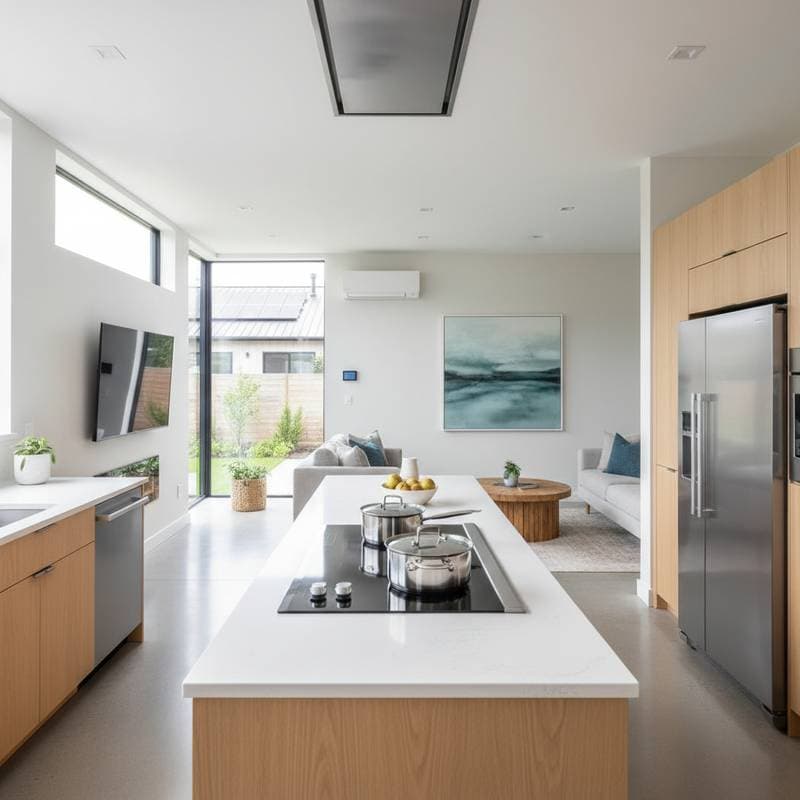3D Printed Adobe Homes: Revolutionizing Sustainable Housing
Why This Innovation Matters
Imagine a construction site where walls emerge not from manual labor but from the precise movements of a 3D printer, layering a blend of clay, sand, and straw. This is not a distant dream but a tangible shift in how we build homes. 3D printed adobe homes merge ancient building techniques with modern automation, addressing critical global housing challenges like affordability, efficiency, and environmental impact. As traditional methods often lead to high costs and excessive waste, this approach offers a compelling alternative for homeowners and communities seeking sustainable solutions.
Financial and Practical Advantages
Adobe, a material used for centuries, stands out for its durability, thermal efficiency, and local availability. When combined with 3D printing technology, it becomes a cost-effective, climate-adaptive building option. The automated process can slash labor costs by up to 60 percent and virtually eliminate material waste, translating to lower initial expenses and faster project timelines. For larger developments, this scalability means meeting housing demands without depleting natural resources.
From a financial standpoint, the long-term benefits are substantial. Adobe homes naturally maintain indoor temperatures, cutting heating and cooling expenses by as much as 30 percent compared to conventional structures. Over a decade, these savings can accumulate into thousands of dollars. Additionally, properties with green features often attract higher resale values and quicker sales, making them a smart investment for the future.
How Technology Enhances Traditional Adobe
Building with adobe traditionally requires significant manual effort to mix and form bricks. 3D printing transforms this by extruding the adobe mixture directly into seamless wall structures, bypassing the need for individual blocks. This automation brings several key benefits:
- Accuracy: Digital designs ensure precise construction, minimizing errors and excess material use.
- Versatility: Unique shapes, curved walls, and custom features become simpler to create.
- Efficiency: Walls can be completed in hours instead of days, speeding up the entire build.
- Strength: Uniform layers improve structural integrity over handcrafted methods.
This blend of heritage and innovation allows adobe to comply with modern building standards while preserving its inherent eco-friendly qualities.
Tailored Options for Every Budget
Homeowners exploring sustainable building often weigh upfront costs against lasting value. 3D printed adobe homes offer flexible choices to suit various financial plans:
- Entry-Level Designs: Compact, single-story homes can cost 20 to 30 percent less than standard builds, ideal for those prioritizing affordability or off-grid setups.
- Mid-Tier Builds: Larger structures with enhanced insulation or solar integration may match conventional costs but yield superior energy savings over time.
- High-End Projects: Custom layouts with smart-home systems and premium finishes might exceed typical budgets, yet they often deliver the strongest market appeal.
The return on investment emerges through reduced utility bills, minimal upkeep, and rising demand for eco-conscious properties. Depending on local conditions, energy efficiency upgrades can pay for themselves within five to eight years.
Built to Last in Any Climate
Adobe inherently resists fire, pests, and extreme weather, and when paired with contemporary engineering, these homes can endure for centuries with basic care. Unlike synthetic materials prone to rapid wear, adobe walls can be mended using the same local soil, keeping repair costs low. This resilience ensures fewer major overhauls, offering both financial savings and confidence in a home designed to withstand changing environmental conditions.
A Healthier Way to Live
Beyond structural and economic perks, adobe homes promote well-being. The natural clay helps balance indoor humidity, reducing risks of mold or overly dry air that can affect respiratory health. Free of toxic chemicals often found in synthetic building materials, these homes provide cleaner indoor air. Their thick walls also dampen outside noise, fostering a peaceful living space that enhances daily comfort and long-term quality of life.
Designing for Tomorrow
3D printed adobe homes are crafted not just for current needs but for future adaptability. The printing process supports universal design elements, such as wider doorways and single-level layouts, ideal for aging in place. Integration with renewable energy, water recycling systems, and modular additions ensures these homes can grow with family needs or evolving market trends, maintaining their relevance and value over decades.
Answers to Key Homeowner Concerns
Many considering this building method have practical questions about its viability. Here are clear insights based on common inquiries:
- Structural Reliability: With proper engineering, adobe meets modern safety standards, often reinforced with additives or protective coatings.
- Climate Suitability: While best suited for arid or moderate regions, adobe can be adapted for humid areas with specialized treatments.
- Maintenance Needs: Routine care, such as reapplying exterior plaster every few decades, is far less demanding than repairs for wood or synthetic exteriors.
- Financing Options: Traditional lenders may support these projects, especially when builders provide performance data and proven track records.
- Urban Potential: Beyond rural settings, these homes are gaining traction in cities as officials recognize their affordability and environmental benefits.
Taking the Next Step
If this approach resonates with your vision for a sustainable home, start by connecting with builders skilled in both 3D printing and adobe techniques. Request detailed project examples and verify their expertise in navigating local permits. Collaborate with architects who prioritize passive design to optimize energy efficiency. Factor in both initial expenses and future savings when planning your budget, and explore financing incentives for green construction. By embracing 3D printed adobe, you are not only building a cost-effective, enduring home but also contributing to a movement that prioritizes the planet alongside personal well-being.









